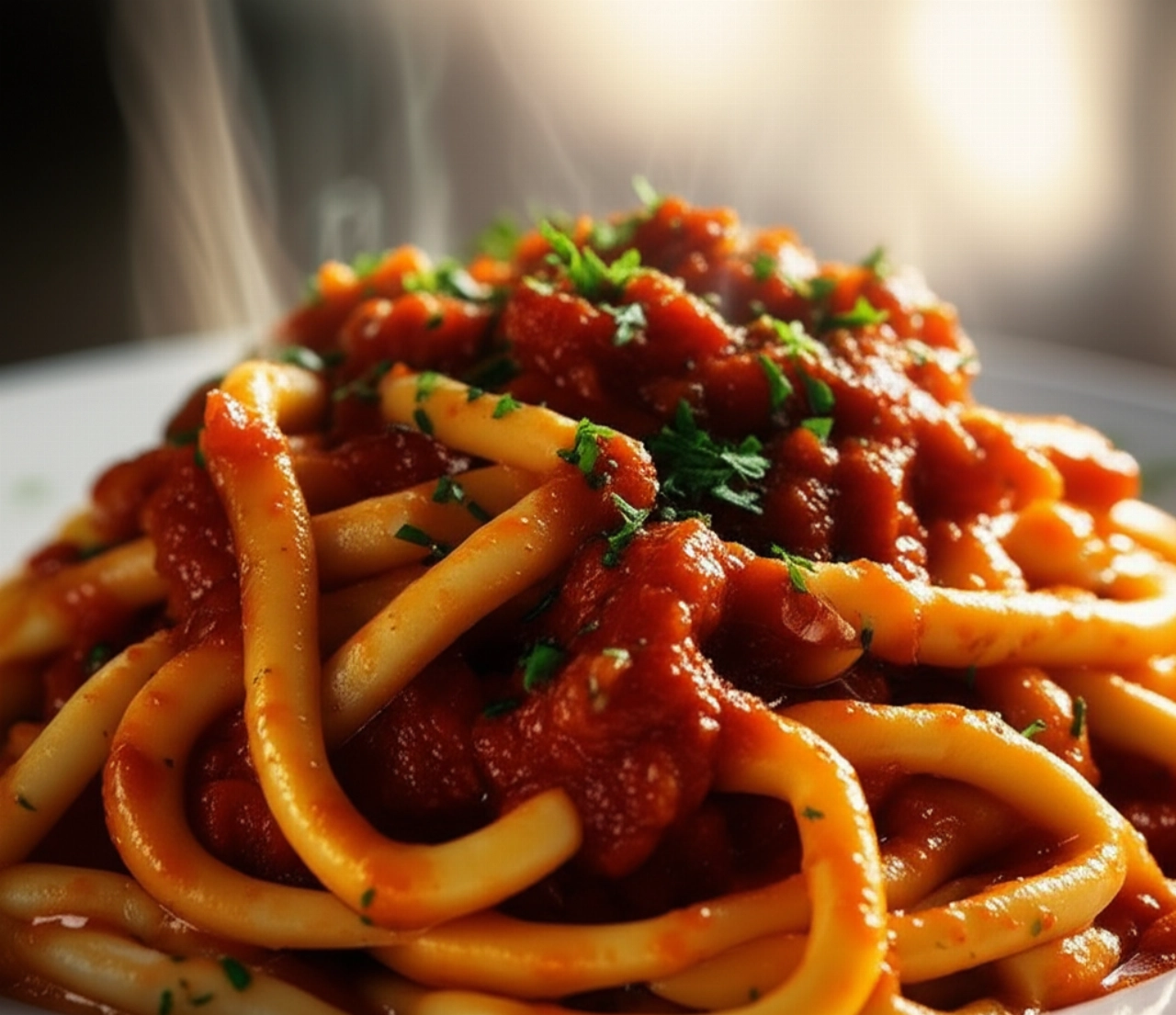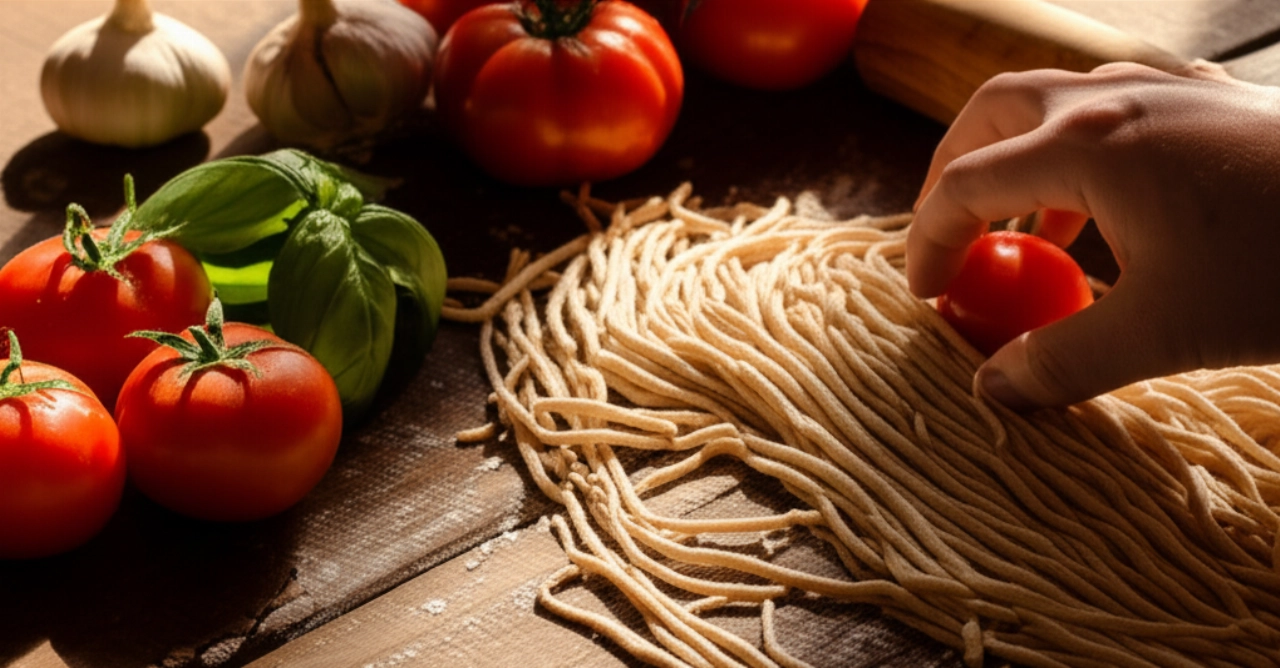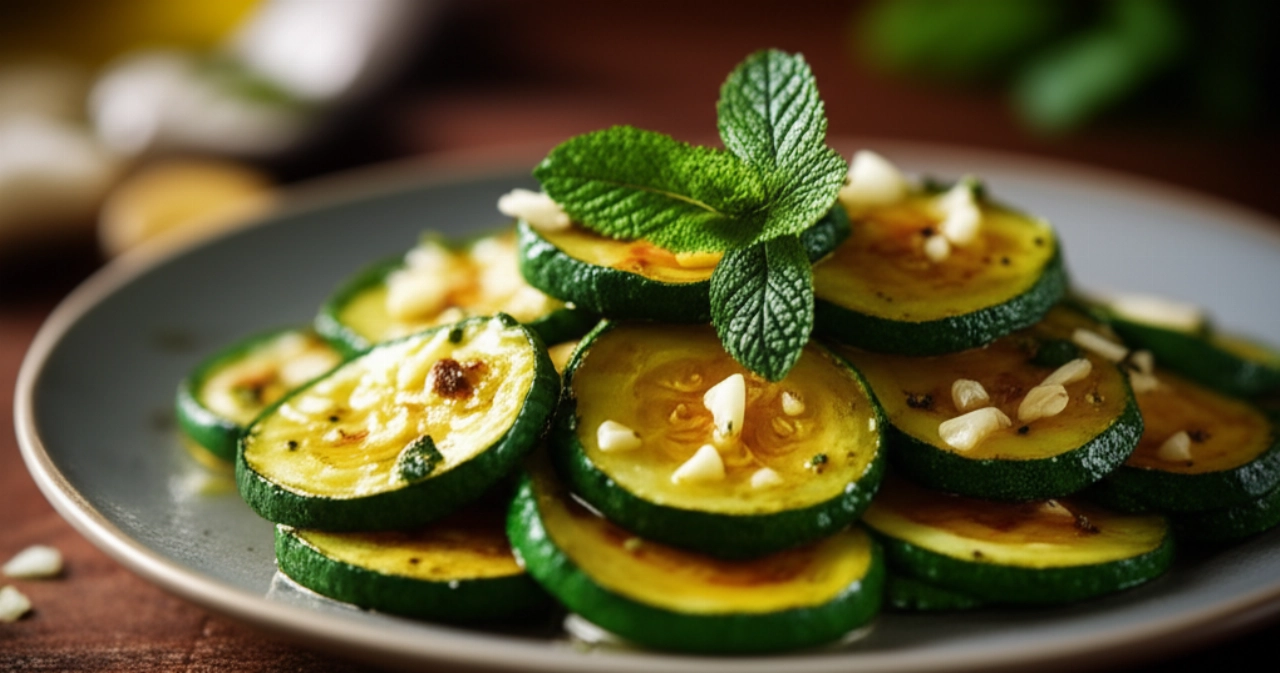There's a scent that immediately takes you back to the heart of Tuscany, a strong yet enveloping flavor that makes you close your eyes and dream of the gentle hills of Val di Chiana. I'm talking about Pici all'Aglione, a dish that is much more than just pasta with sauce: it's an embrace, a tradition, a promise of authentic taste.
Perhaps you've tried to make them, but the sauce wasn't creamy enough, the aglione too strong, or, worse, the pici stuck together. Finding the authentic recipe, the one that guarantees success and the true taste of a Tuscan grandmother, can seem like a daunting task, a bit like looking for a needle in a haystack among the thousand online versions.
Make yourself comfortable, because today I'm revealing all the secrets to preparing perfect Pici all'Aglione. Not just a list of ingredients, but a step-by-step guide, full of tips and tricks that will make you feel like a true Tuscan chef. I'll guide you to create an aglione sauce so aromatic and enveloping that you won't be able to do without it, with perfect pici, homemade or wisely chosen. Success is guaranteed, and the "wow" from your guests too!

Ingredients for Perfect Pici all'Aglione: The Choice That Makes the Difference
For such a simple dish, the quality of the ingredients is everything. It's not just a list, but a thoughtful selection, the first step towards guaranteed success.
- Aglione from Val di Chiana (or Sulmona Red Garlic): This is the true star! Aglione is a giant garlic variety, with a much more delicate and digestible flavor than common garlic, almost sweet once cooked. If you can't find it, you can use Sulmona red garlic or, as a last resort, common garlic, but in reduced quantities and with more attention to cooking.
- Pici: The pasta par excellence. Pici are thick, irregular spaghetti, typical of Tuscany. Ideally, you'd make them at home (and I'll give you some tips on that too!), but if you buy them, choose fresh durum wheat semolina pici that hold up well to cooking and absorb the sauce.
- Quality Peeled Tomatoes: A good sauce starts with good tomatoes. Choose whole, ripe, and flavorful peeled tomatoes, preferably San Marzano or similar. They will be the sweet and acidic base that balances the intensity of the aglione.
- Tuscan Extra Virgin Olive Oil: A fruity oil, with a strong but not overpowering flavor, is essential to enhance the aromas without masking them. Don't skimp on quality!
- Fresh Chili Pepper (or dried): A touch of spiciness is almost a must, but always in moderation. It serves to awaken the palate, not to burn it.
- Salt and Black Pepper: Essential for balancing flavors.
- Fresh Mint (optional): A little secret for an unexpected touch of freshness, to be added at the end of cooking.

The 3 Common Mistakes with Pici all'Aglione (and How to Avoid Them)
Even the simplest dishes hide pitfalls. But don't worry, your chef grandma is here to protect you from every mistake!
- Using Too Much Common Garlic and Not Cooking It Well: The biggest mistake! Common garlic, if used in excess and not cooked slowly and gently for a long time, will be indigestible and too aggressive. Aglione, on the other hand, requires slow, almost "dissolving" cooking to release its sweetness. Tip: If using common garlic, blanch it for a couple of minutes, rinse, and repeat the operation 2-3 times to make it more delicate. Then, cook it over very low heat.
- Not Letting the Aglione "Melt": The secret of aglione sauce is that the garlic must almost melt, becoming a velvety cream that blends with the tomato. If you brown it too quickly or over high heat, it will remain crunchy and its flavor will be too pungent. Tip: Cook it over a very gentle flame, almost "confit," in the oil, until it becomes very tender and almost spreadable.
- Not Sautéing the Pici Correctly: Pici are a porous pasta, made to absorb the sauce. If you drain them too much and don't sauté them in the sauce with a little cooking water, the dish will be dry and the flavors won't combine. Tip: Drain the pici al dente and transfer them directly to the pan with the sauce. Add a ladleful of cooking water and vigorously sauté, tossing the pasta, until the sauce thickens and coats every single picio.

The Magic Touch: The Secret That Makes Aglione Unmistakable
My grandmother, when she prepared Pici all'Aglione, had a ritual. She didn't just cook the garlic, she "cuddled" it. I still remember her smile when she told me: "Aglione isn't fried, it's sung!"
Her secret was the very slow, low-temperature cooking of the aglione in oil. It should never brown, but only soften until it becomes almost a cream. She often added a tablespoon of hot water or vegetable broth during the aglione's cooking, to help it break down without burning, creating an almost emulsified base even before adding the tomato. This small gesture, combined with a pinch of finely chopped fresh mint at the end of cooking (an unexpected but sublime touch!), made her aglione sauce unmistakable: sweet, enveloping, yet with that decisive character that only aglione can give.
Let's Prepare Pici all'Aglione Together: The Step-by-Step Guide
Ingredients (for 4 servings):
- 400 g fresh pici (or excellent quality dried)
- 4-5 large aglione cloves (or 6-8 common garlic cloves, blanched as advised)
- 800 g quality peeled tomatoes
- 1 fresh chili pepper (or a pinch of dried)
- 80 ml Tuscan extra virgin olive oil
- Fine salt and freshly ground black pepper to taste
- A few fresh mint leaves (optional, for garnish)
Instructions:
- Prepare the Aglione: First, peel the aglione cloves and slice them thinly or chop them coarsely. Don't worry if they're not perfect, they'll melt anyway.
- Start the Sauce: In a large pan (big enough to later hold the pici), pour the extra virgin olive oil. Add the chopped aglione and chili pepper (whole or in pieces, depending on your taste). Turn the heat to minimum.
- Slow Cooking the Aglione: This is the key step! Let the aglione sauté gently for at least 15-20 minutes, stirring often. The garlic should never brown, but only soften and become translucent, almost creamy. If you see it drying out too much, add a tablespoon of hot water.
- Add the Tomatoes: When the aglione is very tender and almost broken down, crush the peeled tomatoes with your hands (or a fork) directly into the pan. Season with salt and pepper.
- Cook the Sauce: Let the sauce cook over low heat for about 20-30 minutes, with the lid slightly ajar, stirring occasionally. The sauce should thicken and the flavors should meld. If necessary, add a ladleful of hot water to maintain the right consistency.
- Cook the Pici: Meanwhile, bring plenty of salted water to a boil in a large pot. Add the pici and cook them according to package directions (or until al dente, if homemade). Remember that pici are thick and require more cooking time than other types of pasta.
- Final Sautéing: When the pici are almost cooked, drain them directly into the pan with the aglione sauce, reserving a ladle of cooking water. Sauté the pici in the sauce for 1-2 minutes over high heat, adding a little cooking water if necessary, to create that delicious creamy coating that envelops the pasta.
- Serve: Plate the Pici all'Aglione hot. If you like, garnish with a few finely chopped fresh mint leaves. No cheese is needed, the aglione flavor is already perfect as is!
Tips and Frequently Asked Questions about Pici all'Aglione
So I know you might still have some doubts, and that's okay! Here are the answers to the most common questions to ensure an impeccable result.
- Can I use common garlic instead of aglione? Yes, you can, but with due precautions. Aglione is more delicate and digestible. If using common garlic, I recommend blanching it in water for a couple of minutes, draining it, and repeating the operation 2-3 times. This will make it less pungent and more similar to aglione. Then proceed with slow cooking in oil.
- How do I know if the pici are cooked just right? Pici should be al dente, with a slight resistance to the bite, but not hard in the center. Being a thick pasta, they tend to remain more "firm." Taste them often during cooking and, most importantly, remember that they will finish cooking in the pan with the sauce, so drain them a minute before the indicated time.
- Can I prepare the sauce in advance? Absolutely! Aglione sauce, like many tomato-based sauces, is even better the next day, as the flavors have had time to meld perfectly. You can prepare it, let it cool, and store it in the refrigerator for 2-3 days, or freeze it for a month. When ready to use, heat it and sauté with freshly cooked pici.
- How to make the sauce creamier? The secret lies in the slow cooking of the aglione, which should almost melt. Furthermore, the final sautéing with the pici cooking water is essential: the starch released by the pasta creates a delicious emulsion that binds the sauce and makes it enveloping. Do not add cream or cheese to the sauce, as you would distort the authentic flavor!
- What is the best wine to pair with Pici all'Aglione? A young, fresh, and fruity Chianti Classico, or a Rosso di Montepulciano are perfect pairings. Their acidity and light tannins marry beautifully with the savoriness and slight spiciness of the aglione sauce, cleansing the palate and enhancing the flavors.
There you have it! Now you no longer just have a recipe, but all the secrets to bring to the table a dish that tastes of home, tradition, and love. A dish that will make you look great, whether for a special dinner or a simple family lunch.
Don't be afraid to experiment. Cooking is an act of creativity and passion. But start from this solid base and you'll see that applause won't be lacking. The aroma that will emanate from your kitchen will be the first reward.
Have you tried our recipe? We're very curious to know how it went! Leave a comment below, tell us about your experience or share a photo of your masterpiece on Instagram by tagging @CercaRicette.it. If you loved this first course, you can't miss our recipe for Tuscan Ribollita, a heart-warming comfort food, or for a royal main course like Wild Boar Stew. Until the next recipe, fellow cooks!





